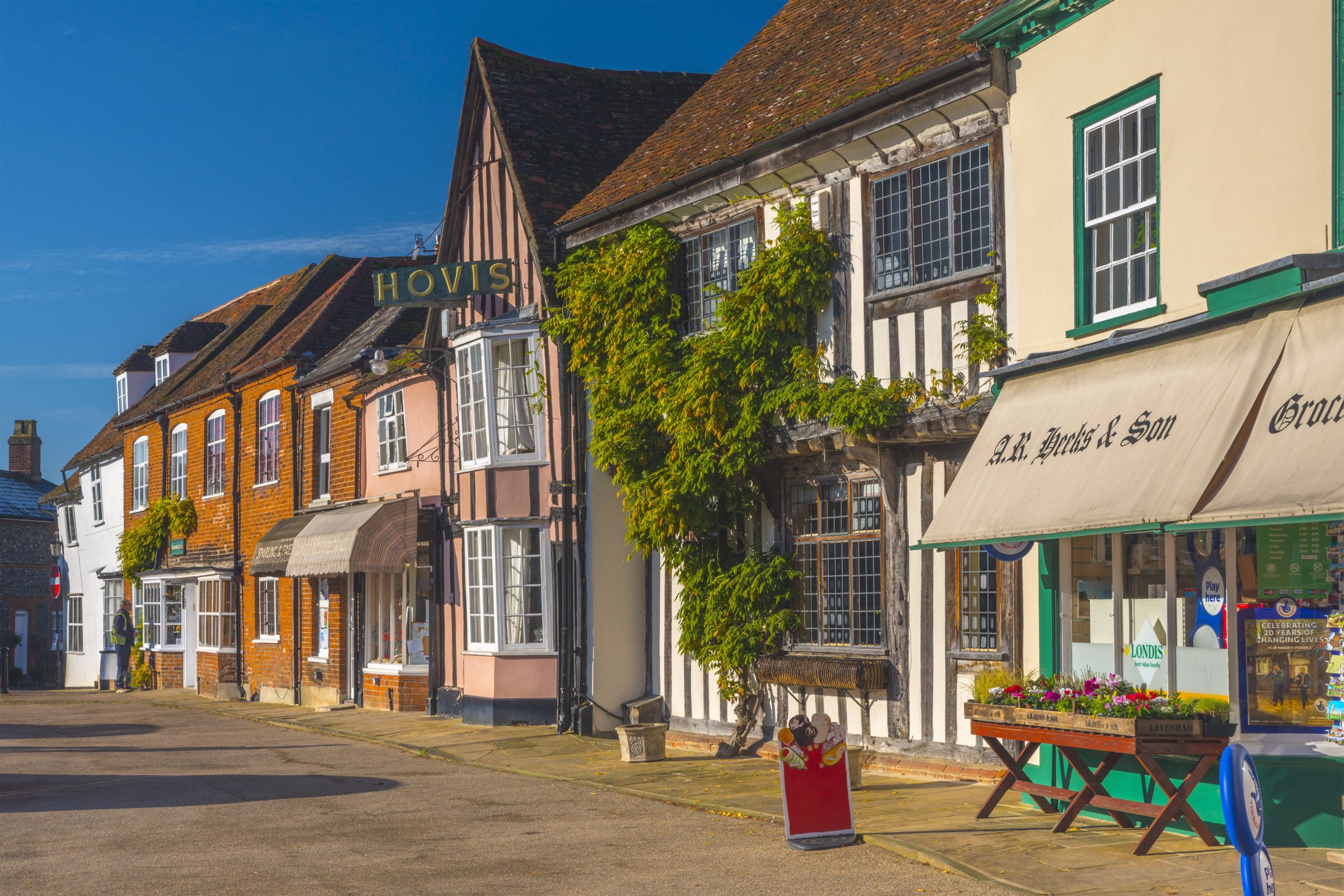Shiver me timbers: Suffolk’s best medieval houses you can stay in
We go in search of the best atmospheric timber-framed medieval houses you can stay in in Suffolk
Suffolk is home to some of England’s oldest and most extraordinary timber-framed medieval houses. These ancient beauties may now be leaning precipitously, but they’re a tangible connection to a lost world – a time when East Anglia was the powerhouse of England, made wealthy by wool.
Suffolk’s so-called ‘Wool Towns’, including Lavenham, Long Melford, and Clare, were at the epicentre of East Anglia’s medieval cloth industry.
Toiling in their tiny cottages, workers and their families transformed raw fleeces into cloth. Their specialist skills in dyeing, spinning, weaving, and finishing meant the region became the focus for the booming woollen trade, which reached its peak in the 1400s.
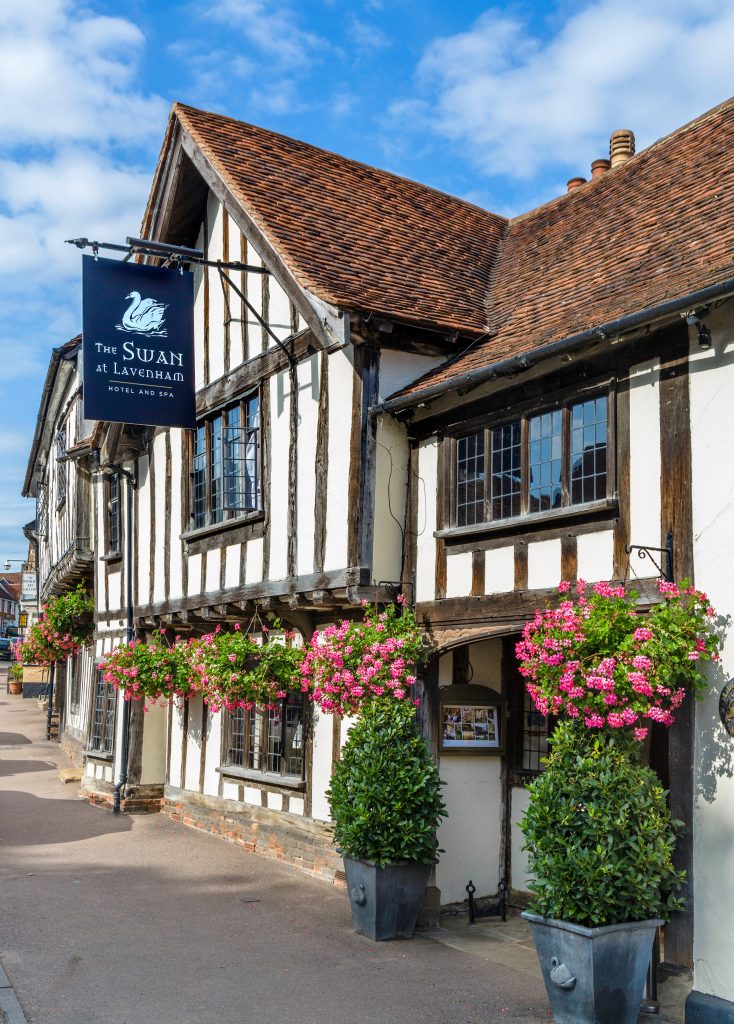
Wealthy wool merchants gave generously to the Church and spent lavishly on their houses. With no decent local stone quarries, but an abundant supply of oak, the magnificent structures were built with skeletal wooden frames, infilled with a lattice of twigs and a sticky mixture of clay, horsehair, and straw.
In the mid-1700s, cloth production became industrialised and moved north, to cities like Manchester and Leeds, spelling economic catastrophe for Suffolk. With no money to rebuild in the trendy red-brick style, impoverished locals had to put up with their crooked wooden buildings. The good times didn’t last, but remarkably the houses did, even though they were built with little more than wood and mud.
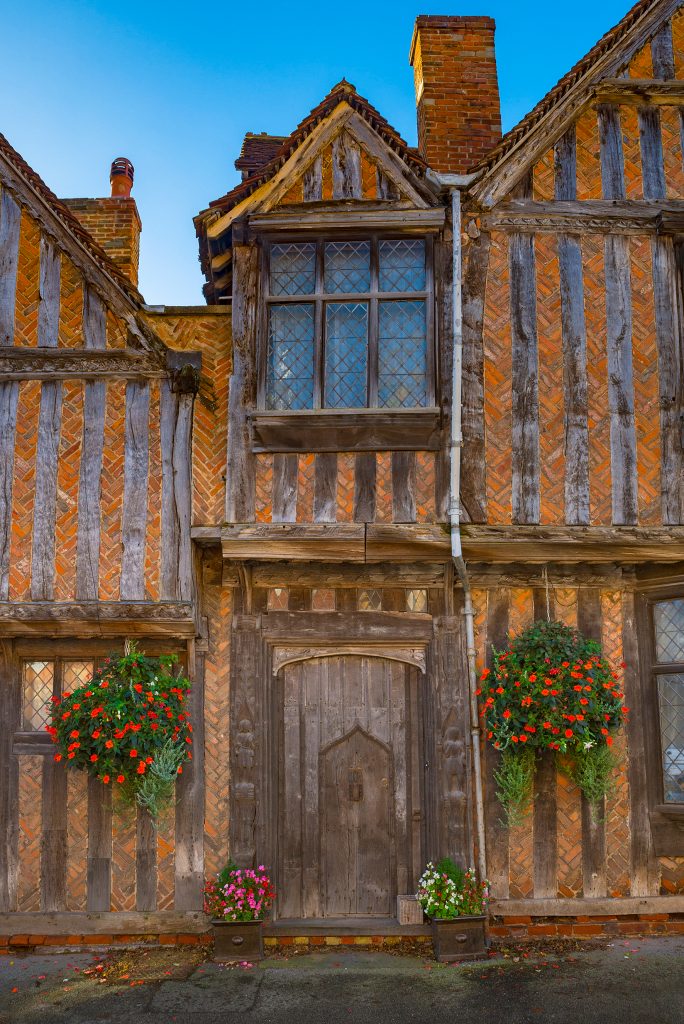
Today, some of these surviving buildings open their doors to visitors and thankfully, though the buildings are old and worn, the facilities aren’t. After a delicious meal, and a hot shower, you can sink into a luxurious four-poster and gaze up at a centuries-old oak-beamed ceiling as you drift off to sleep.
Picture-perfect Lavenham is billed as England’s best preserved medieval town. Now a sleepy backwater, it was once one of the wealthiest places in England, paying more tax than the cities of York or Lincoln. In the 1400s The Swan was a busy coaching inn, with stabling for 50 horses. More than five centuries later it’s still welcoming visitors, but as a luxurious hotel and spa. Now with 45 rooms it is one of Suffolk’s highest-rated hotels, yet it hasn’t lost a jot of its historic charm.
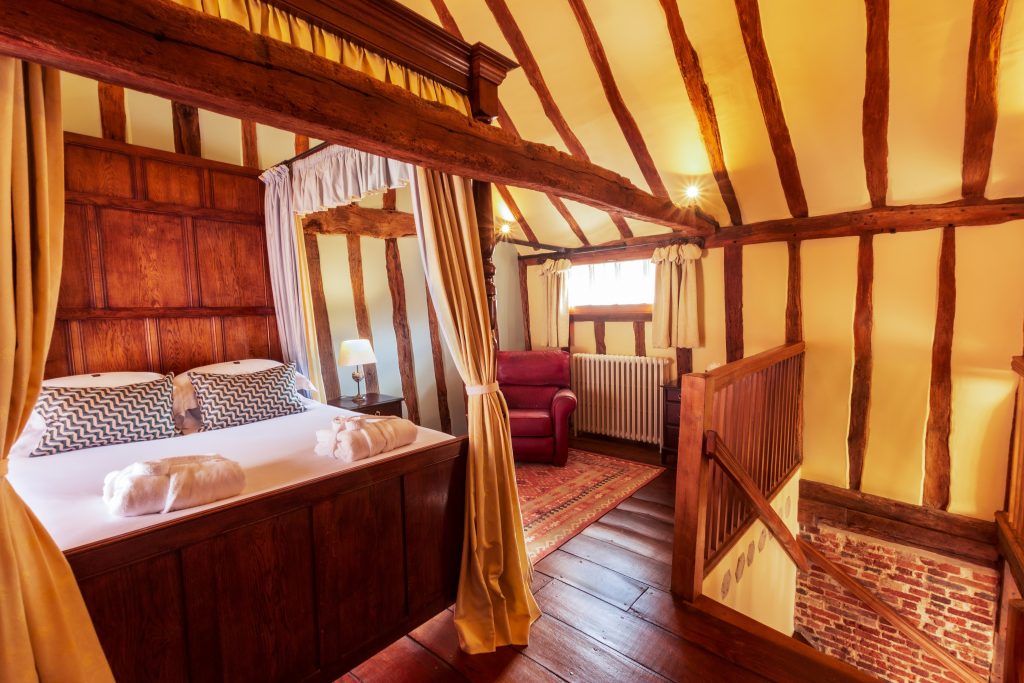
Nearby, the De Vere, a wonderfully wonky bed and breakfast, is referred to by locals as the ‘Harry Potter house’ due to its star turn in The Deathly Hallows: Part One. It’s hard to believe you’re allowed inside, but lucky guests can venture behind the ancient, studded doorway, flanked by carvings of two huntsmen, into the 14th-century manor, which once belonged to the noble De Vere family. After awakening in one of the two cosy bed chambers, you’ll enjoy a thoroughly modern breakfast (no roasted swan) at the long medieval-style table.
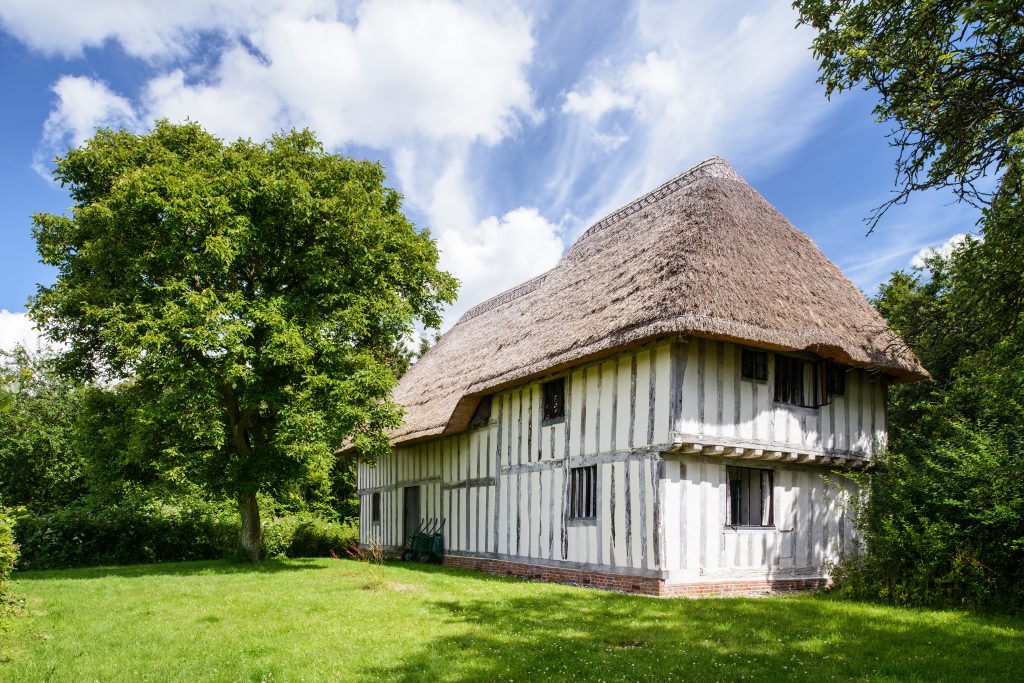
About half an hour’s drive from Lavenham, Purton Green, near Stansfield, is the last remaining house from a 13th-century medieval village. Rescued by the Landmark Trust from near-total dereliction, this is the ultimate time capsule break, in the most unspoiled of locations. After parking the car at the end of a rough track, cross the stream, and you’ll encounter two wheelbarrows. Push your luggage the last 400 yards across a field, then you’ll catch your first magical glimpse of the astonishing thatched and timbered house through the trees.
Just five miles south of Purton Green, it feels like little has changed for centuries in the tiny town of Clare and the aptly named the Ancient House is a well-known Suffolk landmark. Sitting prettily on the church green, its intricate plasterwork – known as pargeting – is reminiscent of a wedding cake. In the 1920s an American tried to buy the house so he could dismantle and rebuild it in the States, but it was snapped up instead by a wealthy local and gifted to the parish council. Half the house is now a museum, the other a bijou holiday cottage, cared for by the Landmark Trust.
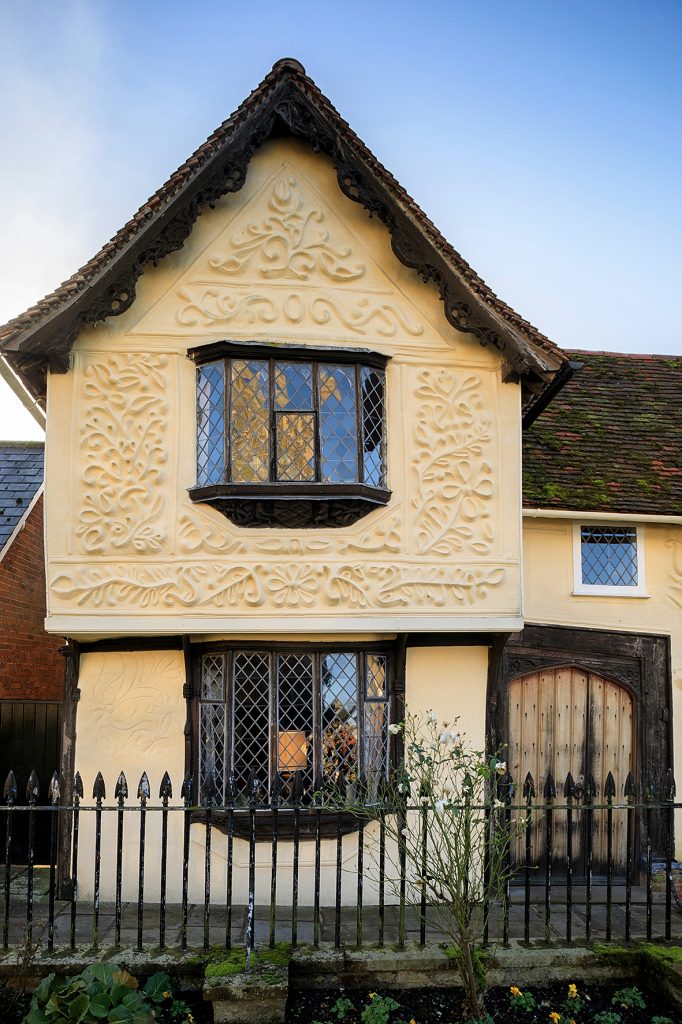
A short drive from the Suffolk coast, the New Inn, Peasenhall is an atmospheric former inn that has been converted into a holiday rental, sleeping eight and offering open-plan living in medieval style. While the village peacocks strut around outside, you might feel tempted to strut your own stuff in the huge central hall, once a busy communal space where travellers ate, drank, and made merry. Or perhaps you’ll be content to sit by the fire, gazing up at the fabulous 15th-century roof structure.
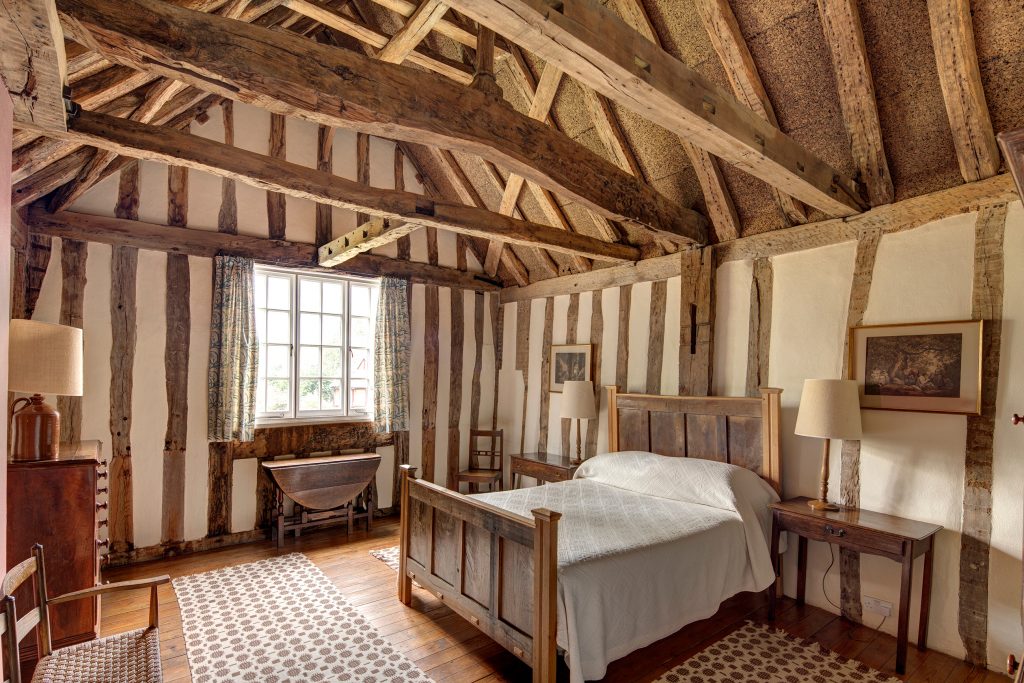
If walls could talk, what incredible stories would these buildings tell? Whether you opt for a snug cottage, or much grander accommodation, as a modern-day guest you’ll become part of these houses’ latest chapters…
This is an extract, read the full feature in our October/November 2023 issue of Discover Britain, available to buy here from Friday 8 September.
Read more:

